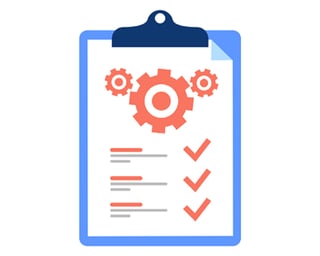C-store Operators Move Technology Investments to the Must-Have Column
NEWARK, N.J. — Not that long ago, technology initiatives were a nice-to-have in the convenience channel, a bonus to stand out in the competitive set. But today, convenience store operators are moving technology from their wish lists to their priority lists.
According to the recently released 2019 Convenience Store News Technology Study, nearly two-thirds of c-store IT executives said their technology budget increased in the past year — and nearly a quarter of them said their spending increased by 10 percent or more over the previous year.
Looking ahead, six out of 10 c-store IT execs expect to spend more on technology in 2020 than they did in 2019. Only 14 percent expect to spend less.
Convenience Store News Editorial Director Don Longo presented the study's findings in a Nov. 21 webcast sponsored by Hughes Network Systems. He was joined by a panel of industry experts — Ed Collupy, executive consultant with W. Capra Consulting Group; Jay Dempsey, manager of merchandising technologies at Love's Travel Stops and Country Stores; and Jeff Bradbury, senior marketing director for Hughes Network Systems — who provided additional insights into the results.
"It's great to hear that companies in the convenience/petro industry are really continuing on that path of increased investment in technology," said Collupy. "It certainly follows with what's going on both in general retail and retail systems, and with many of those companies I speak with and work with, there is a demand for new and updated systems. As the study shows, there's investments occurring both in-store and at headquarters."
Two things in particular stand out among the top tech priorities: EMV compliance and employee engagement, Bradbury observed.
While the industry has made some progress, it still has a lot of work to do in order to be fully compliant by the October 2020 EMV deadline — which shifts full liability from the card companies to retailers. According to the study, 96 percent of the industry is either fully compliant or on the way to becoming compliant at the point-of-sale (POS).
"The sticking point is at the pump," Longo said, citing that 20 percent of c-store retailers say they have not even started the EMV compliance process at the forecourt.
"We are absolutely anxious about this. If that 20-percent number is right, that means somewhere north of 30,000 or 35,000 c-stores haven't started the process at all yet," Bradbury said. "Taking it even further, it probably means that another 30,000 to 50,000 have started the process but aren't through the process and aren't sure they are going to get to the end of the process by the end date."
He urged c-store retailers to start early to avoid getting backed into a corner and either bearing the cost of failing the transition or implementing a mediocre transition approach.
When asked as part of the study to rank their near-term tech priorities, respondents chose better inventory management as No. 1 for the second consecutive year.
However, Dempsey said there is probably "a long laundry list" as to what is No. 1 — including labor concerns and engaging labor to keep up with inventory. Most retailers, he explained, want an automated inventory replenishment system.
"Out-of-stocks will always be a key fundamental reason," Dempsey noted.
Retailers are not the only ones faced with labor pressure; suppliers are being challenged as well, notably as the trucking industry deals with a driver shortage.
"Just trying to get help is a challenge for them, so their ability to service us effectively has caused us to take a larger role in terms of taking on these responsibilities to bridge these gaps," Dempsey said. "Because at the end of the day, the customer doesn't really forgive us if a supplier can't perform for any reason."
When a product is out of stock, it creates one of the biggest friction points for a customer and creates a very poor customer experience, Collupy added.
Redefining Convenience
The results of this year's Technology Study confirm that technology is now a central part of doing business in the c-store and fuel retailing space.
"As the retail universe faces new challenges, and as store types continue to blur the lines between convenience and other channels, technology advances are critical for convenience retailers as both a way to differentiate from the competition and to continue to command ownership of the 'convenience' factor," Longo said.
Bradbury agreed, noting that other retail channels are vying for the title of convenience. He pointed to a Wall Street Journal article from earlier this year that talked about how all retail today is about convenience.
"All different aspects yield convenience, whether it is frictionless/faster checkout or better loyalty programs. Interestingly enough, in all this discussion about convenience in retail, the one thing the Wall Street Journal didn't mention was c-stores," Bradbury said. "That just goes to show you the blurring of the lines and how all different retail is in each other's business areas and striving to find way to make the customer experience more seamless and easier — and thereby providing convenience to the customer.
"I think everybody is going to try to take their spin on what convenience means in their business model and figure out a way to optimize the convenience level for that model. That's the retail impact across the board," he continued.
To view the webinar, titled "Investing in a Better Business — Featuring Highlights of Convenience Store News' 2019 C-store Tech Study" on demand, click here.



